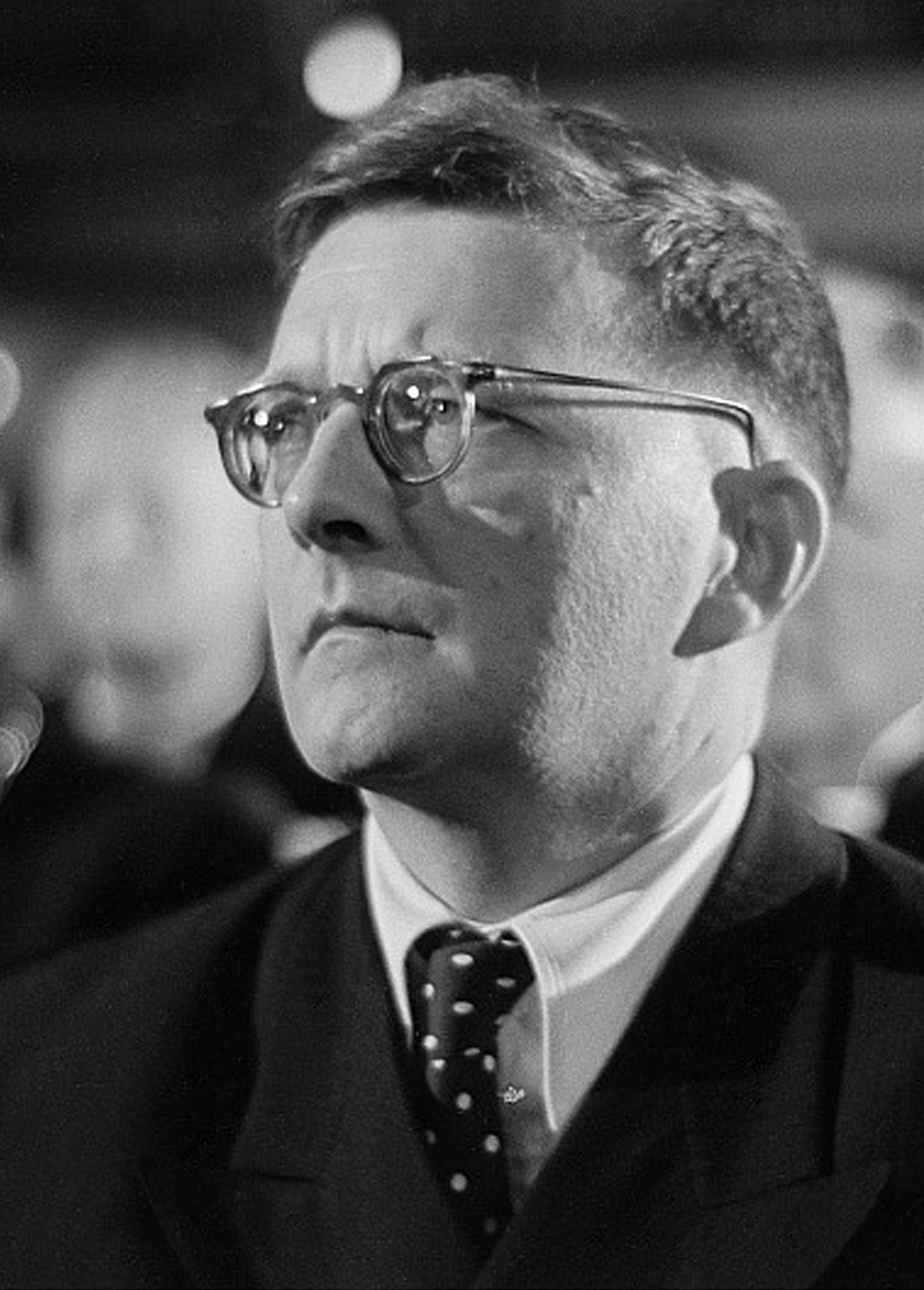Dmitri Shostakovich
The 20th & 21st Centuries
Public domain, via Wikimedia Commons
Dmitri Shostakovich was born in St. Petersburg in 1906. The year before had seen Bloody Sunday and the Revolution of 1905, and revolutionary grumblings and factions continued throughout his childhood.
He showed musical talent early on, taking piano lessons from his mother. When he was 12 years old, the Russian Revolution broke out. Shostakovich wrote a funeral march for two leaders of the Kadets who had been murdered by Bolsheviks. Formally known as the Constitutional Democrats, the Kadets had favored a constitutional monarchy until the abdication of Tsar Nicholas II; after this, they favored a Russian Republic. The Bolsheviks, of course, were Communists. This suggests that the Shostakovich family had early anti-Communist sympathies.
The following year, at the age of 13, with the Communists now in power, Shostakovich was admitted to the St. Petersburg (now Leningrad) Conservatory, studying piano at first, and later composition under the son-in-law of Rimsky-Korsakov. His first year there, at the age of 14, he composed his first major orchestral work, the Scherzo for Orchestra in F♯.
Upon his graduation from the Conservatory in 1926, he premiered his First Symphony, which gained international attention. Despite its success, he began his career as a performer and only gradually shifted more and more to composition. His Second Symphony, written in 1927, was a patriotic pro-Soviet work, suggesting possibly that his political sympathies had shifted toward the new government, or at least that he was trying to curry favor with the authorities.
In 1928, Stalin began his “Five-Year Plan,” which included restrictions on arts and culture. Only traditional Russian styles and folk music were approved; avant-garde techniques and jazz were banished. Groups such as the Russian Association of Proletarian Musicians eschewed modern compositional techniques, publicly attacking them as decadent Western bourgeois culture.
His 1936 opera Lady McBeth of Mtsensk was initially well received until Stalin walked out of a performance and the work got a bad review in Pravda in the next day. Not only did this nearly end Shostakovich’s career, but the composer lived in fear of his life throughout the next two years. Stalin had just begun the “Great Purge,” a program of political executions that killed close to a million Russians, including many of Shostakovich’s friends and relatives.
In response, Shostakovich subtitled his Symphony No. 5 “A Soviet Artist’s Reply to Just Criticism.” It was traditional and straightforward enough to be not only popular, but approved by the authorities, while those close to the artist recognized a depth of emotion and struggle. Back in good graces, Shostakovich was appointed composition professor at the Leningrad Conservatory. His compositional style at this pointed shifted from the free flow of ideas present since the late Romantic period to an intense, almost Baroque focus on the development of singular melodic ideas.
Famously, he began using a “musical signature” known as the DSCH motif. The notes D-Eb-C-B in German notation are spoken as “D-S-C-H,” forming the initials of Dmitri Schostakovich.
Shostakovich’s Seventh Symphony gained fame not so much for its musical quality, but because it premiered in 1941 while Leningrad was enduring a devastating siege by Nazi forces. Broadcast and received by German troops over their radios, the piece became a symbol of Russian defiance and resistance to Hitler’s ambitions.
In 1948, the Moscow Composers’ Conference, under the leadership of Stalin’s propagandist Andrey Zhdanov, again tightened its grip on arts and culture, and Shostakovich was removed from his teaching position in Leningrad to reduce his influence. When Stalin died in 1953, however, Shostakovich’s Tenth Symphony was deliberately written in a style that defied official restrictions.
After World War II, however, Shostakovich’s work took a more somber tone. His Symphony No. 13 was based on a poem lamenting the massacre of Jews, which also got him back in trouble with the authorities, and the work was suppressed after its first performance.
He joined the Communist Party in 1960, and even served on political committees. He passed away in Moscow in 1975.
A book purporting to be Shostakovich’s memoirs was published four years later by an acquaintance named Soloman Volkov. Volkov claimed the content of the memoirs was dictated to him by Shostakovich personally, but this is debated. The memoirs express Shostakovich’s opposition to Stalin, include criticism of the government and other composers, and claim that his music is filled with hidden messages of defiance and rebellion. Shostakovich’s own son has claimed the book is “about [his] father, not by him” but that the overall gist is accurate. At any rate, the search for hidden messages in Shostakovich’s music, lamenting life under a totalitarian regime and defying Communist leaders, attended him throughout his life and career, and scholarly debate continues today.
